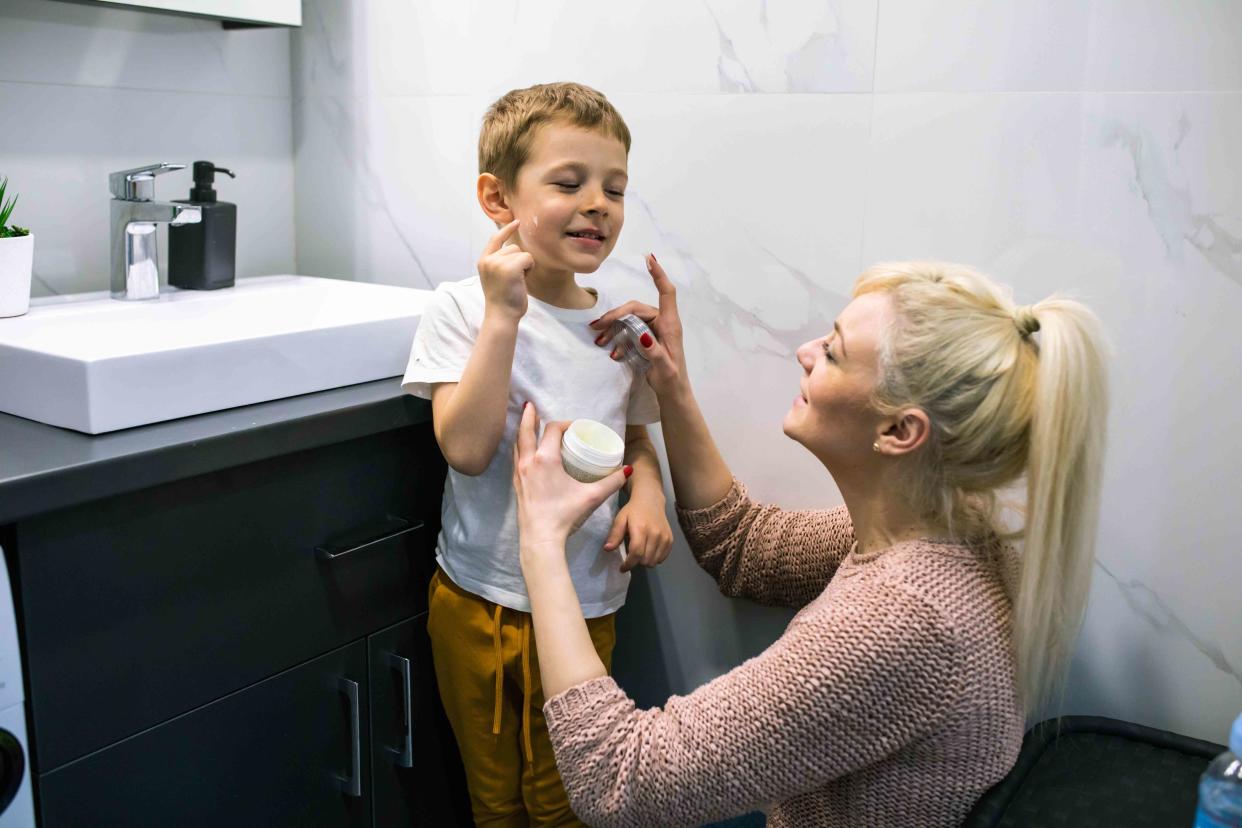How Is Impetigo Treated?

Aleksandar Jankovic / Getty Images
Medically reviewed by Casey Gallagher, MD
Impetigo is a highly contagious bacterial skin infection that most commonly affects young children between the ages of two and five, but sometimes can also affect adults. If you or your child contracts the infection, it's common to experience red sores that form around the mouth, nose, arms, hands, legs, or feet. While serious complications are rare, it's possible to develop kidney problems and rheumatic fever if impetigo is left untreated.
Fortunately, treatment can help rid the infection from your body and improve skin sores. The most common treatment option is antibiotics. Depending on whether you or your child have impetigo, a pediatrician (a doctor who specializes in medical care for children under 18 years old) or a dermatologist (a doctor with expertise in skin conditions) can prescribe medication. Generally, treatment for impetigo is successful in reducing symptoms within 10 days of starting antibiotics.
Medications
The most effective treatment for impetigo is an antibiotic medication. These medicines work by directly attacking the bacteria or helping your body fight off the infection. There are two main types of antibiotics: topical and oral. You can apply topical antibiotics on to your skin in the form of a cream or take oral antibiotics in pill form by mouth.
Topical Antibiotics
Generally, your healthcare provider will prescribe one of two topical antibiotic ointments to treat impetigo. Altabax (retapamulin). It's important to note that this ointment is FDA-approved for use on children nine months or older. For optimal results, your provider will instruct you to apply the cream on your or your child's sores twice daily for five days.
An alternative topical antibiotic that your provider can prescribe is Bactroban (mupirocin). The FDA has approved this ointment for children three months or older. Unlike Altabax, you will need to apply this ointment on the skin three types a day for up to 10 days.
While adverse reactions to topical antibiotics are rare, some people do report skin irritation, rash, swelling, headache, and diarrhea after use.
Oral Antibiotics
In the case that your or your child have an extensive case of impetigo, or if your condition is worsening despite treatment with a topical antibiotic, your healthcare provider may suggest oral antibiotics. The exact dosage you or your child needs will vary by age and the severity of the condition.
Your provider may recommend one of the following medicines to keep symptoms at bay:
Medication | Frequency | Possible Side Effects |
Augmentin (amoxicillin) | 2 to 3 times a day | Rash, swelling, and increased risk of liver or kidney disease if taken too long |
Keflex (cephalexin) | 2 to 4 times a day | Allergic reaction and diarrhea |
Cleocin (clindamycin) | 2 to 4 times a day | Diarrhea, allergic reaction, abdominal pain, nausea, and vomiting |
Doxteric (doxycycline) | Once every 12 hours | Nausea, vomiting, diarrhea, rash, loss of appetite, and light sensitivity |
Minocin (minocycline) | Twice a day | Fever, nausea, vomiting, diarrhea, swelling, rash, and increased risk of liver damage |
Home Remedies
To help ease symptoms and prevent transmitting the infection to others, healthcare providers may recommend adopting a skincare routine to promote hygiene. This involves:
Removing dirt from affected areas with warm and soapy water
Covering sores with soft bandages to avoid scratching and prevent transmission
Bathing with a small amount of diluted bleach (half a cup for adults with a full bath and about a teaspoon per gallon for infants or toddlers)
Some dermatologists also suggest applying hydrogen peroxide—an antiseptic liquid—to the sores. However, more research is being conducted to understand the effectiveness of hydrogen peroxide for impetigo.
Living With and Managing Impetigo
Impetigo sores may be painful, but they do gradually resolve with treatment. In rare cases, you may develop some scarring around the affected skin. Those who take antibiotics for impetigo typically see their symptoms improve within 10 days. Without treatment, this condition typically heals within 14 to 21 days. However, it's essential to always seek treatment for infections, as you may be at an increased risk of complications if the condition is untreated.
While complications are rare, the infection can spread further into the skin, causing a condition called ecthyma—sometimes also known as deep impetigo. There is also the risk of the infection spreading to other parts of the body or causing inflammation in the kidneys. Keep in mind: without treatment infants and children have a higher risk of developing impetigo again.
If you or your child has impetigo, it’s important to follow your healthcare provider’s directions closely and keep up with treatment as instructed. Impetigo is highly contagious and remains so during the first 24 to 48 hours after starting antibiotics. You should also consider keeping yourself or your child away from others during this to avoid transmitting the infection to others.
A Quick Review
Impetigo is a bacterial skin infection most commonly seen in children two to five years old. However, some adults may also develop the condition. Impetigo causes painful red sores on various parts of the body including the face, arms, or legs. Keep in mind: impetigo is highly contagious and can easily spread to others. That's why seeking out medical care and taking antibiotics as instructed are crucial in improving symptoms.
For more Health news, make sure to sign up for our newsletter!
Read the original article on Health.

